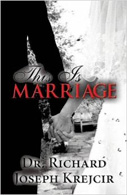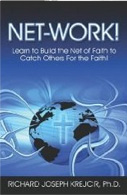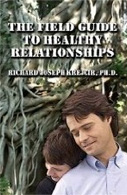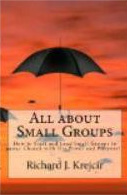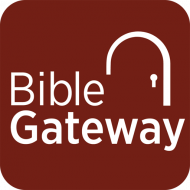"The Four Horseman"
General idea: And so it begins, Judgment from God's throne, poured out on the world. The four horsemen embody the judgment and themes of conquest. They were symbols of an agrarian, warlike culture that engaged in war such as in the time of David when they were successful by their besieging of the enemy. These four horsemen encompass all of the most impacting judgments or sufferings a person or people could face¾that of war, famine, and death. Here, God is chastising a world that has disrespected and even forgotten Him. Its confidence is in the status quo, not in His Sovereignty. As humanity rises up against Him, He raises His Hand against those who would boldly defy Him.
Vs. 1-4: The theme for the last two chapters has been worship and how Christ is sovereign and worthy. Now, the attention turns to Judgment. This passage begins a series and is the first three of seven of judgments climaxing in chapters 8-9 and 16. The themes from this passage are also drawn from Zechariah, chapters one and six about the angelic horsemen who guard the earth and signify divine judgment. There is a sequence, first of conquest, then of bloodshed, followed by famine, and, finally, death. Such themes were common in ancient cultures and apocalyptic literature.
· I watched. John serves as a witness, an important position in legal "testate" renderings then and now. A witness points to the validity of the contents of a document (Deut. 30:19; Psalm 50:4).
· Opened the first of the seven seals. A document could not be opened until it was ready for the seals to be broken, such as in a will, the death of the testator, or the decedent (person who wrote or leaves the will). When all the seals are broken in chapter eight, then the contents are read. At this point, in chapters
· Come means a summons to come and see.
· White horse. White represents conquest, and along with a horse, symbolizes the conquering king and subjugation. Some commentators argue that this represents Christ; others say the antichrist. However, these arguments are from human reasoning and not from Scripture. In ancient cultures, a white horse was a common symbol usually meaning dire subjugation, calamity, or something to be feared. The color white and/or a horse do not necessarily represent Christ in Hebrew thinking or in the
· Held a bow was a symbol of conquest and war. This was an image of sheer terror as one is being conquered. Everything is lost, perhaps even one's life. The biggest enemy to the Romans in
· Conqueror…conquest proves the point that Revelation interprets Revelation. If you keep reading, observe the context, and know your Old Testament, it will tell you what the images mean, not a newspaper, a madman, or a false teacher!
· Another horse … fiery red one. Red is a color that meant bloodshed and war, as Mars is the red planet and god of war (Zech. 1:8; 6:2).
· Power to take peace, meaning the times will be harsh.
· Make men slay. Chaos begets chaos; violence has the tendency to escalate itself.
· Large sword was a symbol for judgment and war; large perhaps referred to its eminence and veracity.
Jesus is the Sacrifice for our redemption and reconciliation. He saves us, but if we reject Him, we bring judgments upon ourselves. He did more than He could or should for we who are wretched and undeserving!
Vs. 5-8: This passage warns us of what is coming in the daily sufferings of life and in the finality of end times. Be prepared, frugal, wise, and be ready for anything. This means that when times are tough and there is rationing, making sure one is a wise steward of their goods and services is important. This is a warning not to waste but get ready for food shortages that are common in war and tribulations. If Revelation has a late date, during this time
· Black horse represents famine, and the scales and amounts expressed refer to restrictions by God's grace even in judgment, as He is limiting the devastation and suffering (Zech 6:2-6).
· Pair of scales referred to a small wooden beam with scales hung from either end and balanced in the middle. The measurement was by the counter weights of pre-measured stones.
· Wheat is the staple of a basic diet for a person's sustenance. One quart means just enough for one person when you had a large family to feed. This is not necessarily referring to inflation or market economy as indicators to Christ's coming. Rather, it is a symbol for being prepared for famine. The pricing is not monetary prediction (although inflation does go along with famine and shortages and thus will apply as so); rather, it is referring to the severity, as it will be harsh.
· Denarius/day's wages refers to inflation, indicating that the cost of products and services may rise ten times, and all will be affected. We may not be able to partake in the abundances and excesses as we once did because of tribulations and judgments. Nothing is immune from judgment.
· Three quarts of barley. This amount of barley was a ration and not enough for a family; barley was cheaper and less desirable than wheat. This meant family members might die of starvation, as often happened in sieges and war.
· Oil, symbolizing riches and affluence and not crucial for ones sustenance, will not be as affected for a time, or it is God's grace that some good things are left for us to enjoy by His blessing. Oil was very important but not essential; it was used for lighting, cooking, skin care, washing, anointing, and religious observances. In other words, judgments will affect daily life and comfort; no one is immune! It is interesting to note that olive tress and grape vines are more drought resistant because they have deeper roots, whereas wheat will wither and die quickly. We are more resistant in tough times when we have deeper ties and trust in our Lord!
· A pale horse, a Jewish image for the Angel of Death or the "ashen" appearance of the dead. As pale is the color of death and decay, like a dead leaf or person (Jer.
· Its rider was named Death …Hades was following, referring that he symbolizes death; from he Greek Hades and the corresponding Hebrew, Sheol (Matt.
· Given power over a fourth of the earth to kill by sword, famine and plague, and by the wild beasts of the earth…This may seem harsh but consider that the horseman only have the power that God, through His wise judgment and grace, allows. His grace and protection are here. Some see "fourth of the earth" as a coming global catastrophe, but some scholars say the Greek meaning is sometimes mistranslated (although debated) as it is here in the NIV. It rather means the four corners, or the four parts of the earth, and not necessarily one fourth, but authority over all, all areas of the globe. This also does not mean that one fourth will die, but they have the power to kill one fourth. If this means a fraction, the context denotes that they have full power to as much as Christ will allow, and He has limits to suffering.
Christ's worthiness is proved and provided by His entering our human world as a baby first, then, as a man, lived a life on our behalf. He was killed and His blood spilled for us, for the covering of our sins. He paid the ransom for us all, regardless of nationality or position, for all who are unworthy (and all of us are unworthy). His salvation is for all who will receive His election, His payment for our sin so we can be clear and right before God. Christ pays the way for His Kingdom and our citizenship, participation, and reign in it. But, in receiving His election, we still have to take delivery of it. Hs grace is "irresistible," but are we receiving, growing, and applying it? By His sacrifice, He became worthy to save us and now He makes us worthy before the Father. What stops us from receiving His acceptance?
The Preterist view sees this passage as nothing significant happening until chapter eight; this is just a "predatory show," a seal玅breaking ceremony and introduction to what will take place soon, and thus, already has. Some see this as the Judgment of Jerusalem in 70 A.D. as horsemen represent war and conquering by
The Futurist view sees this passage as the state of the tribulation. Many see the while horse as Christ and His victory, but this contradicts their theory. Some see these as symbols of materialism, government, or a new world order rule in the last days. Others see this as representing the antichrist or a counterfeit leader. This is "isagesis," or reading into the text something that is not there and taking Daniel 9:26; Luke 4:6; Rev. 13:2 and 2 Thess 2:8-10 out of context and/or sequence. The second and red horse and seal they see as war before Christ's climatic return. Some commentators love to read the newspaper into these images and say that the red horse is
Idealist view: They also mistakenly see the white horse as Christ or the progress of the Gospel. Others see this as the universality of war, conquest, and the rise of empires that bring death and suffering, a process continually repeated throughout history (Prov.
The Historicist view sees the white horseman as representing the period of Roman occupation and the evil of Domitian. "Peace," in this passage, means the period of peace and prosperity that was from after the death of Domitian in 96 A.D. until after Aurelius in 180 A.D. The bow refers to the dynasty of
The Essential Inductive Questions (for more Inductive questions see Inductive Bible Study):
- What does this passage say?
- What does this passage mean?
- What is God telling me?
- How am I encouraged and strengthened?
- Is there sin in my life for which confession and repentance is needed?
- How can I be changed, so I can learn and grow?
- What is in the way of these precepts affecting me? What is in the way of my listening to God?
- How does this apply to me? What will I do about it?
- What can I model and teach?
- What does God want me to share with someone?
Additional Questions:
1. What is your favorite kind of horse or animal and why?
2. Why is it important that John served as a witness?
3. How does it make you feel that God is pouring out His judgment to the world? What does it mean to you that Jesus is also Redeemer and Sovereign, exercising His love and protection? Are these ideas contradictory or complementary?
4. Why does John use these themes of conquest, war, famine and death? Is there a better or more user-friendly way to explain God's judgment that the average person can understand?
5. What needs to take place for lukewarm Christians, who are weak in their faith or too busy for Christ, to comprehend both His judgment and His grace? Do you see that in these heinous depictions His love is there玆His care is there, and He is protecting His saints?
6. Do you think the horsemen are just symbols of judgment or literal angelic beings? Do you think it is worthwhile to spend significant time in debate over this? Does it really matter considering that the centrality and object of this passage is that God is pouring out judgment and we need to repent and be ready; the means is immaterial?
7. What can we do to develop more trust Him so we have no need to fear these events that one day will come about in their fruition?
8. What does it mean to you that you are His, and when you are His, you have no need for worry, fear, or doubt about what will happen in the future? How can you put more trust of Christ in your life?
9. How is "He is able" applied in your life? What needs to take place in your thinking and life to allow Christ to enable you to grow further in your faith and walk with Him?
10. Why is it important to make sure you are a wise steward of your goods and service? What can you do to be more resistant in tough times? How does having deeper ties and trust in our Lord help?
11. How has sin separated us from God? How has Christ's worthiness been proven and provided us with Salvation? Why is it that there is no pride, person, or thing that can stand in His way?
12. Do you have confidence in the status quo of the comforts of life or in His Sovereignty? What can your church do to educate people that their focus needs to be on Christ rather than on personal needs? How can your church show that Christ's care is there, protecting? What would that look like?
© 2006 R. J. Krejcir Ph.D. Into Thy Word Ministries www.intothyword.org





